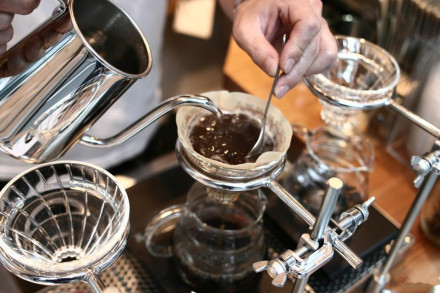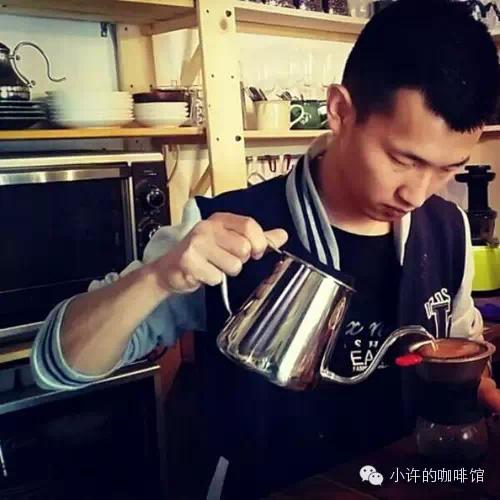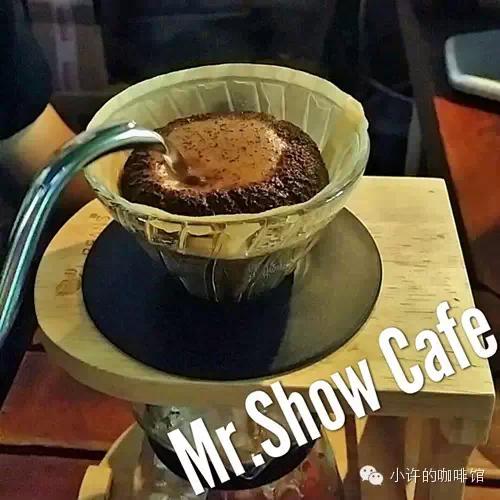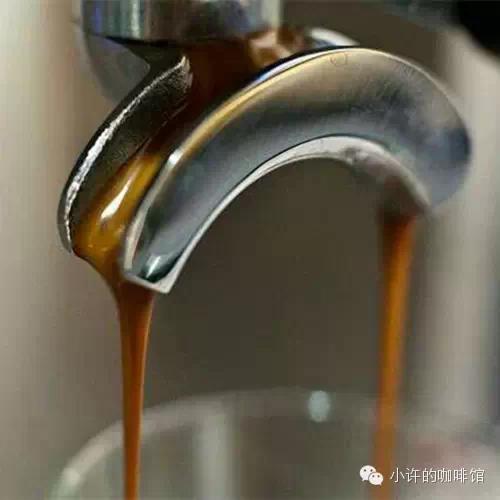The most important process of coffee extraction: steaming and preleaching

Steaming and pre-soaking are the first stage of single-item hand-brewed coffee and esp extraction. Whether steaming and pre-soaking are sufficient directly affects the taste of a cup of coffee. Although the two are applied to two coffees with different production processes, they have a very close relationship and the same principle.
Steaming and pre-soaking:
Steaming:
It refers to a process in which hot water is light, soft, fast and evenly placed on the coffee powder when making hand-brewed coffee, so that the coffee powder is "activated", so that the coffee releases a lot of carbon dioxide, and the coffee powder will form an upward bulge.
Pre-soak:
It refers to a process in which the water of the brewing head quickly moistens the surface of the coffee cake in 1-2 seconds when making esp.

Why is it that the two are closely related and the principle is the same?
Let's talk about the role of both:
I. Steaming:
Most people pay a lot of attention to the softness of the water flow and the freshness of the coffee powder when making hand-brewed coffee. Steaming is also indispensable. Good steaming can fully infiltrate the coffee powder, activate the coffee activity, and form a good gap between the coffee particles, thus making the subsequent coffee extraction process smoother. The so-called activation is to make the coffee powder have a volcano-like swelling state, the coffee powder rises upward, the air between the coffee particles will be heated and expanded, the coffee particles themselves will release a large amount of carbon dioxide, and bubbles will be formed between the particles. These gaps will make the coffee powder form a uniform filter layer and supply the space required for hot water to penetrate.
Good coffee steams form approximately uniform voids, and the downward flow of coffee liquid is uniform. If a good filter layer cannot be formed, then stagnant water will be formed, the drip rate will slow down, the extraction time will be prolonged, and then the phenomenon of excessive extraction will be formed. Coffee taste will also be messy, sour mainly, coffee itself characteristics are difficult to reflect, taste thin, with a sense of stimulation, return fragrance is not dignified enough.
So what are the factors that affect steaming?

The first is the choice of equipment. A good filter cup and filter paper are not only necessary for making good coffee, but also necessary for good steaming. High-quality brand filter cup design groove can make the air flow is good, will not let the gas from the coffee surface gushing out, high-quality filter paper permeability will also make hot water quickly through, will not form a drip filter speed fast and slow.
Second, there must be a suitable hand flushing pot, which can well control the water speed and flow rate, flow rate, and the hardness of the water flow.
Third, water. Steaming water does not need to be too much, just need to wet the coffee surface, but it needs to be soft and light, fast and even, just like spring rain moistening things, so that steaming speed at the same time.
Fourth, water temperature. I personally think that the best temperature for making hand-brewed coffee is 83 degrees Celsius, and the highest temperature should not exceed 90 degrees Celsius. This water temperature will not produce too much bitterness when steaming, nor will it have too much sourness, and it can also make coffee fully expand.

Fifth, the time from start to finish. Personally, I think that steaming really doesn't need so long in theory. Observation is the most important thing. From the beginning of swelling uplift, the best time for the first water injection I personally think should be before it expands to the maximum, but just before it stops expanding. If the expansion is to the maximum, stop expanding and then inject water, the gap formed will be too large, and it will be collapsed by sudden water flow, and it will not be fully extracted.
A cup of hand-brewed coffee state and taste is good or bad, mostly depends on whether a good filter layer is formed, that is, whether the steaming is sufficient and good, so that the hot water evenly penetrates the coffee powder is the greatest significance of coffee extraction.

II. Pre-soak.
Pre-impregnation is a problem that occurs in esp production.
Pre-soaking takes place within 1-2 seconds after pressing the extraction button. This process is very short, so short that it seems to be negligible, but what happens in this 1-2 seconds affects the quality of the subsequent extraction state, that is, the taste of coffee.
What is the purpose of pre-soaking?
In fact, pre-soaking and steaming are roughly the same, that is, the coffee surface is wetted, so that the coffee cake expands rapidly, so that the cake forms a good filter layer, theoretically, the expansion space of coffee powder is about 1-2mm, and the expansion makes coffee powder particles form uniform bubbles. Pre-impregnation provides the function of expanding these coffee particles to form uniform spaces, allowing the aroma of coffee to be released freely.

So what are the influencing factors of prepreg?
The first factor affecting pre-impregnation is the filling amount of coffee powder. Of course, the filling amount here refers to the filling amount after pressing powder. The perfect filling amount is below the filling line of the handle, and then take it off after the handle card is brewed. If there is no trace on the powder cake, it is qualified. Then what is excellent? In theory, the perfect filling amount is that the surface of the powder cake and the water outlet net of the brewing head have a gap of about 1-2 mm. This space happens to be reserved for coffee powder, which is used for physical expansion.
Second, pump pressure. Stable pumping pressure is a necessary condition for making good coffee and, of course, for pre-impregnation.
Third, water temperature. The temperature of the water during the pre-soak stage is preferably between 95 and 93 degrees Celsius, so that the coffee will not be excessively bitter.
To sum up, stewing and pre-soaking are the most important processes. Whether it is pre-soaking or stewing, it is an important process in order to make coffee physically expand, form uniform voids, and then form a good filter layer, so that hot water can penetrate quickly and evenly, without excessive blockage, resulting in excessive extraction, and then full extraction.
Source: Sohu Self-media Xiaoxu Cafe
Important Notice :
前街咖啡 FrontStreet Coffee has moved to new addredd:
FrontStreet Coffee Address: 315,Donghua East Road,GuangZhou
Tel:020 38364473
- Prev

Top 10 Benefits of Coffee
1. Refresh. Caffeine is spicy and aromatic, which can easily stimulate the central nervous channel through the brain blood barrier, promote brain activity, make the mind clearer, more responsive, thinking ability abundant, concentration, improve work efficiency; can stimulate the brain skin, promote sensation, judgment, memory and emotional movement. 2. Strengthen muscles and bones, strengthen waist and knees. Caffeine can make muscles contract freely and increase
- Next

Coffee introduction is the most practical illustration. Collect it decisively.
Don't be afraid to go out and don't know what kind of coffee to order. List of common coffees: the proportion of various coffee ingredients
Related
- What is the meaning of lactic acid fermentation with coffee bean treatment?
- How to judge the state of foam by sound?
- How does the latte pull out the unicorn pattern? Come to get for a little trick to improve the flower pull!
- Will flower pulling affect the taste of the latte?
- Do you know the history of coffee?
- The difference between honey treatment and sun washing what is raisin honey treatment?
- What kind of milk can a novice use to make coffee foam to keep the foam longer? The correct method and skills of milking tutorial sharing
- Why do washed coffee beans taste sour? Flavor characteristics of washed Coffee
- Introduction to the skill of how to practice the size and height of water injection around the circle of hand-brewed coffee
- How do beginners practice coffee flower drawing from scratch?

